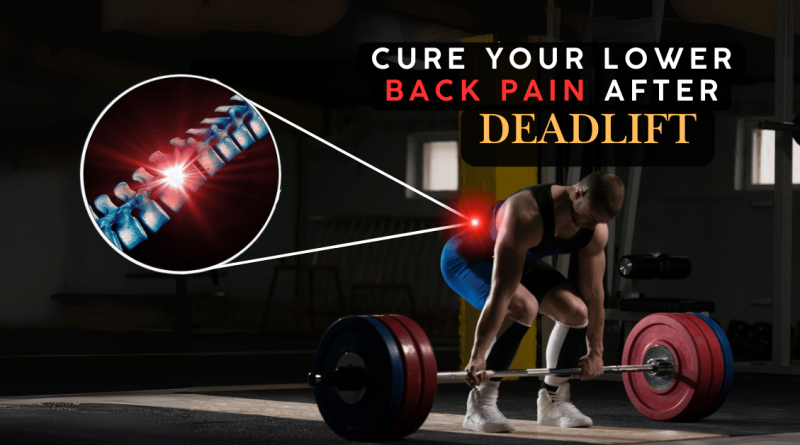Lower Back Pain After Deadlift? 7 Immediate Way to Fix It Today
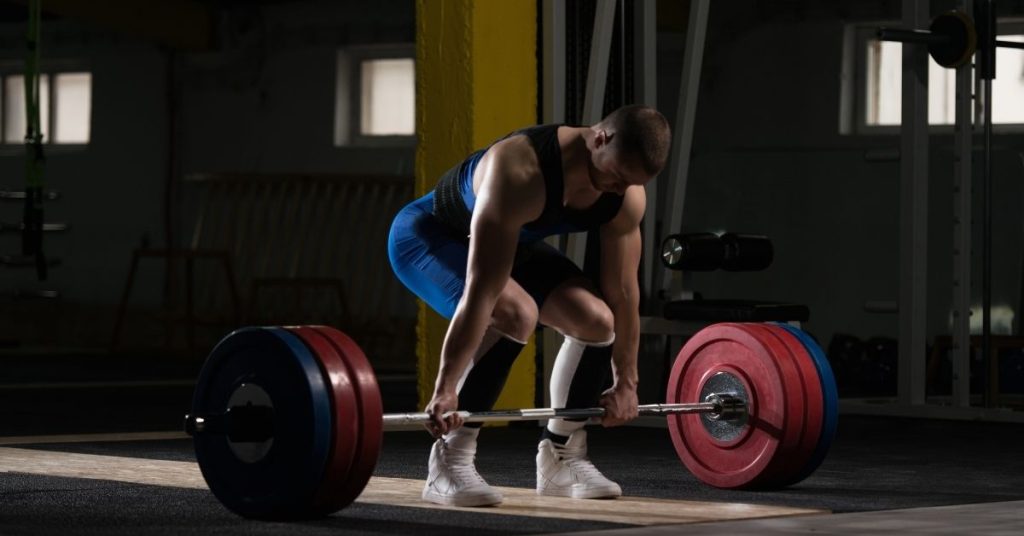
Lower back pain after deadlift affects countless fitness enthusiasts and athletes, making it one of the most common complaints in strength training. This discomfort can range from mild muscle soreness to debilitating pain that disrupts both training progress and daily activities.
Understanding and addressing deadlift-related back pain is crucial for several reasons:
- Injury Prevention: Proper technique and awareness help avoid serious injuries that could sideline you from training
- Performance Enhancement: Correct form leads to better strength gains and muscle development
- Long-term Health: Protecting your spine during deadlifts supports overall back health and fitness longevity
Whether you’re new to deadlifting or an experienced lifter dealing with persistent back issues, this comprehensive guide will equip you with practical solutions. You’ll learn:
- The root causes of deadlift-related back pain
- Essential form corrections to protect your spine
- Effective prevention strategies and warm-up techniques
- Signs that indicate when to seek professional help
- Steps for safe recovery and return to training
By implementing the strategies outlined in this article, you’ll be better prepared to perform deadlifts safely and effectively while minimizing the risk of lower back pain. Let’s dive into understanding why back pain occurs during deadlifts and how to address it properly.
Understanding Lower Back Pain from Deadlifts
Deadlifting places significant mechanical stress on your lower back, specifically targeting the lumbar spine and surrounding muscles. This compound exercise engages multiple muscle groups simultaneously, making it both beneficial and potentially risky when performed incorrectly.
Impact on Lower Back Anatomy
The deadlift movement pattern directly affects these key structures:
- Lumbar Vertebrae: Bear the load during the lift
- Spinal Erectors: Maintain spine position throughout movement
- Intervertebral Discs: Experience compression forces
- Supporting Ligaments: Stabilize the spine during the lift
Common Signs of Deadlift-Related Back Pain
Recognizing these symptoms helps identify potential issues:
1. Acute Pain Indicators
- Sharp, shooting pain during the lift
- Immediate discomfort when standing upright
- Pain that intensifies with movement
2. Post-Exercise Symptoms
- The dull, persistent ache in the lower back
- Stiffness upon waking the next day
- Difficulty bending or twisting
3. Red Flag Symptoms
- Radiating pain down legs
- Numbness or tingling sensations
- Loss of strength in the lower body
Pain Location Patterns
Different areas of back pain can indicate specific issues:
- Central Lower Back: Often related to spinal compression
- One-sided pain: May indicate muscle imbalances
- Lower Back to Hip: Possible sacroiliac joint involvement
Duration-Based Pain Types
Understanding pain timing helps identify severity:
- Immediate Pain: Occurs during or right after lifting
- Delayed Onset: Develops 24-48 hours post-workout
- Chronic Pain: Persists beyond normal recovery time
The intensity and location of back pain from deadlifts can vary significantly between individuals. These variations depend on factors such as lifting technique, load management, and individual biomechanics. Identifying specific pain patterns helps determine appropriate corrective actions and when to seek professional guidance.
Common Causes and Symptoms of Back Pain from Deadlifts
Back pain from deadlifts stems from three primary factors that lifters need to understand and address:
1. Improper Form
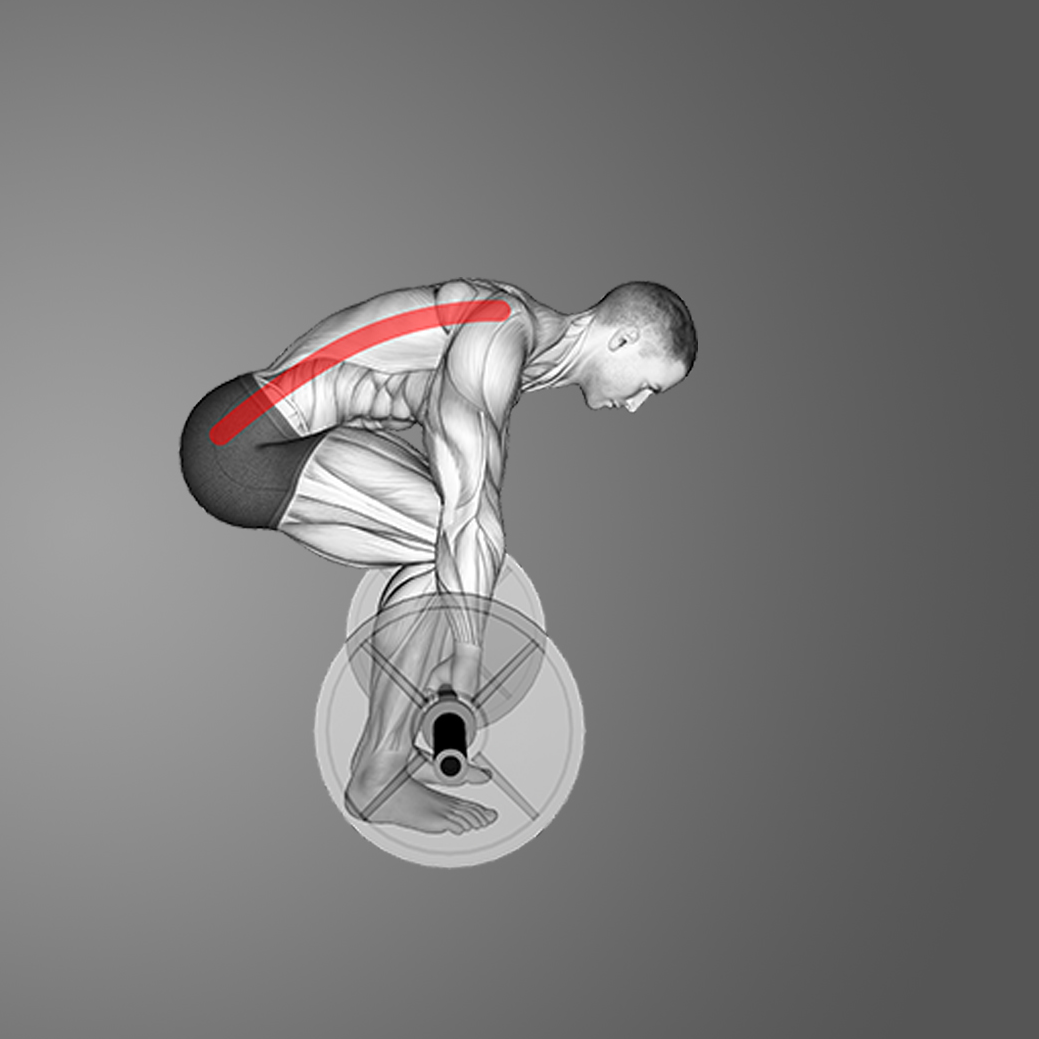
- Rounding the lower back creates excessive stress on spinal discs
- Hyperextending (arching) the back compresses vertebrae unnaturally
- Lifting with a twisted spine increases the risk of disc herniation
- Poor hip hinge mechanics force the back to compensate
A neutral spine position – where natural spinal curves are maintained – distributes force evenly across vertebrae and supporting muscles. This alignment allows the posterior chain to work efficiently while protecting spinal structures.
2. Muscle Overuse
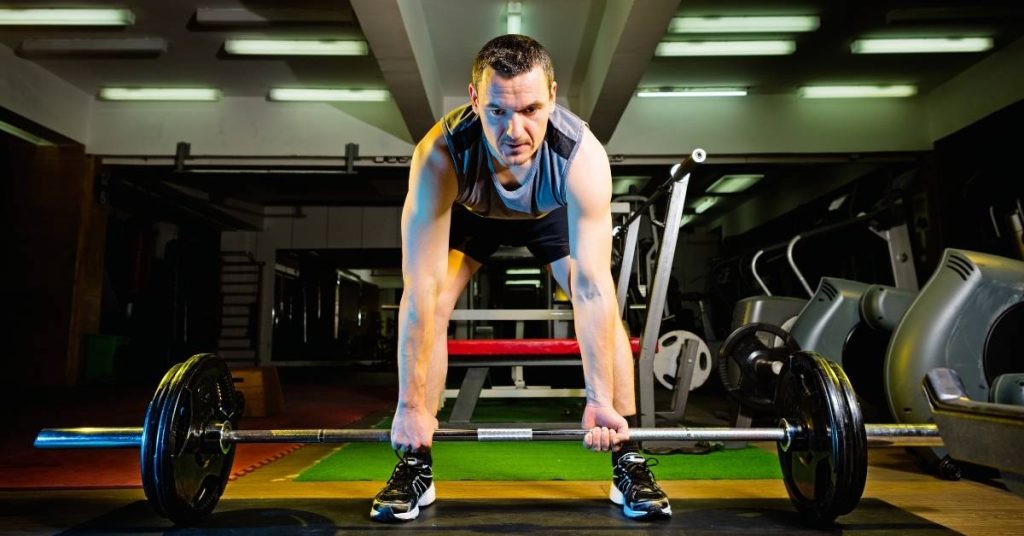
- Lumbar paraspinal muscles experience significant strain during deadlifts
- Hamstrings can become overworked, leading to compensation patterns
- Core stabilizers fatigue when subjected to repeated heavy loads
Signs of muscle overuse include: * Sharp pain during movement * Prolonged muscle soreness (beyond 72 hours) * Reduced range of motion * Muscle spasms or tightness.
3. Heavy Loads
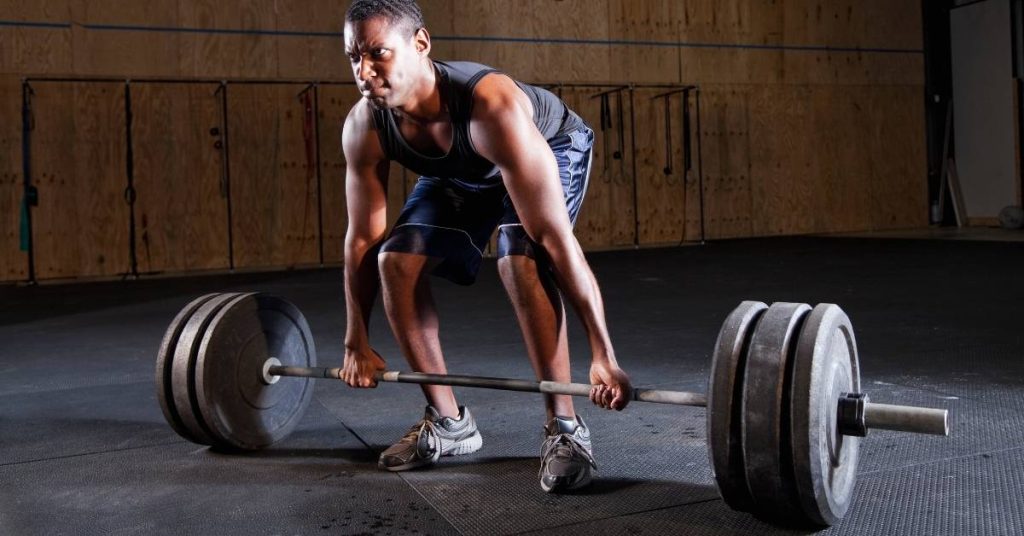
- Excessive weight forces breakdown in form
- Spinal compression increases exponentially with heavier loads
- Central nervous system fatigue impacts muscle recruitment patterns
Risk factors of lifting too heavy: * Immediate sharp pain * Muscle strains * Ligament sprains * Potential disc injuries
Understanding personal limits requires honest self-assessment. Signs you’re lifting too heavy:
- Unable to maintain proper form throughout all repetitions
- Holding breath or straining excessively
- Shaking or unstable movement patterns
- Requiring momentum to complete the lift
Recognizing these patterns helps identify the root cause of back pain and guides appropriate corrective actions. The relationship between these factors often compounds their effects making maintaining proper form more challenging, leading to increased muscle stress.
It’s also important to note that muscle overuse can lead to chronic conditions if not managed properly, while understanding the biomechanics of lifting can provide insights into how to avoid such injuries in the future as discussed in this comprehensive guide on lifting techniques.
Read More- Navigating Health Challenges Beyond 50
Other Contributing Factors to Consider
Beyond form and technique issues, several underlying factors can significantly impact your risk of experiencing Lower Back Pain from Deadlifts.
Inadequate Recovery
Your body needs sufficient time to repair and strengthen muscle tissues between training sessions. Without proper recovery:
- Muscle fatigue accumulates, leading to compromised form
- Micro-tears in muscles don’t heal completely
- The risk of chronic inflammation increases
- Performance plateaus or declines
- Neural fatigue affects muscle recruitment patterns
A well-structured recovery period allows your central nervous system to reset and your muscles to rebuild stronger. Signs you need more recovery time include:
- Persistent muscle soreness lasting more than 72 hours
- Decreased performance in subsequent workouts
- Unusual fatigue or weakness during warm-up sets
- Sleep disturbances
- Increased irritability
Poor Flexibility
Limited mobility in key areas creates compensatory movements that stress your lower back:
Hip Flexibility
- Tight hip flexors force your pelvis into anterior tilt
- Limited hip extension restricts proper hip hinge
- Reduced range of motion leads to excessive lower back involvement
Hamstring Flexibility
- Tight hamstrings pull on your pelvis and lower back
- Limited flexibility prevents proper hip hinge mechanics
- Restricted movement patterns increase spinal loading
Assessment Tips
- Try touching your toes while keeping your legs straight
- Perform a lying straight leg raise test
- Check hip flexor flexibility with a Thomas test
Regular mobility work targeting these areas helps maintain proper movement patterns during deadlifts. Static stretching, dynamic movements, and soft tissue work can improve flexibility over time. Incorporating mobility exercises into your warm-up routine prepares your body for the demands of heavy lifting while reducing strain on your lower back.
Preventing Lower Back Pain While Deadlifting
Proper positioning forms the foundation of safe deadlifting. Here’s a detailed breakdown of correct positioning techniques:
1. Foot Placement and Stance
- Position feet hip-width apart
- Point toes slightly outward at 15-30 degrees
- Distribute weight evenly across the entire foot
- Keep feet centered under the barbell
2. Barbell Setup
- Place barbell 1-2 inches from shins
- Position bar over mid-foot
- Grip bar just outside knee width
- Maintain bar contact with legs throughout the movement
3. Core Engagement Techniques
- Take a deep breath into your belly
- Brace abdominal muscles as if preparing for a punch
- Create 360-degree pressure around midsection
- Maintain this tension throughout the entire lift
- Reset breathing between repetitions
4. Essential Pre-Lift Checklist
- Hips positioned between knees and shoulders
- Shoulders slightly ahead of the bar
- Back neutral – neither rounded nor overarched
- Arms straight, serving as hooks
- Chest up, shoulders back
A proper warm-up routine reduces injury risk and prepares muscles for heavy lifting:
5. Dynamic Warm-Up Sequence
- 5-10 minutes of light cardio (rowing, walking)
- Cat-cow stretches (10-15 repetitions)
- Bird dogs (8-10 on each side)
- Glute bridges (12-15 repetitions)
- Walking lunges (10 on each leg)
6. Progressive Loading Pattern
- Empty barbell: 2 sets of 5-8 reps
- 50% working weight: 3-5 reps
- 70% working weight: 2-3 reps
- 85% working weight: 1-2 reps
- Rest 1-2 minutes between warm-up sets
7. Mobility Work Focus Areas
- Hip flexor stretches
- Hamstring mobility drills
- Thoracic spine rotations
- Ankle mobility exercises
Maintaining proper form requires constant body awareness. Record your lifts regularly to analyze the technique. Practice with lighter weights until movement patterns become second nature.
Choosing Appropriate Weights for Safe Lifting
Selecting the right weight for deadlifts requires a thoughtful approach based on your current fitness level and experience. Here’s a systematic method to determine your ideal starting weight:
Starting Weight Guidelines:
- Begin with light weight training bars or PVC pipes to master the proper form
- Progress to an empty Olympic barbell (45 pounds/20 kg) once the form is solid
- Add small increments (5-10 pounds) only after completing 3 sets of 8-12 reps with perfect form
Signs You’re Using the Right Weight:
- Ability to maintain proper form throughout all sets
- Control during both lifting and lowering phases
- Minimal muscle fatigue between sets
- No sharp pain during or after exercise
Progressive Loading Strategy:
- Add weight in 5-10 pound increments
- Master each weight increase for 1-2 weeks
- Track your lifts to monitor your progress
- Reduce weight if form deteriorates
Red Flags to Watch For:
- Inability to maintain a neutral spine
- Rushing through repetitions
- Excessive strain or grinding
- Form breakdown during final reps
Weight Selection Tips:
- Record your lifting sessions
- Listen to your body’s signals
- Consider daily energy levels
- Factor in previous workout intensity
A safe approach to weight progression helps build strength steadily while minimizing injury risk. Your ideal working weight allows proper form execution while challenging your muscles appropriately. Remember that strength development is a gradual process – rushing through weight increases often leads to technique breakdown and potential injury.
What to Do if You Experience Back Pain After Deadlifting
Lower back pain after a deadlift is a warning sign that shouldn’t be ignored. Taking immediate steps to address it can prevent serious issues later. Here’s a simplified and actionable guide to understanding what to do when you experience back pain after deadlifting.
Step 1: Immediate Action
If you feel pain, don’t power through your workout. Here’s what you should do:
1. Stop Immediately
- Pause all weightlifting activities to avoid worsening the pain.
- Pay attention to your body—pain is a signal that something is wrong.
2. Use Ice Therapy
- Apply ice to the painful area for 15-20 minutes every 2-3 hours during the first 2-3 days.
- Always use a thin towel between your skin and the ice to avoid frostbite.
Step 2: Recovery Phase
1. Modify Your Routine
- Skip heavy lifting for 2-3 days.
- Focus on light activities like walking to avoid stiffness.
- Sleep with a pillow under your knees to ease the strain on your lower back.
2. Gentle Stretches to Relieve Pain
Try these simple stretches to loosen up your lower back:
- Cat-Cow Stretch: Move your back between arched and rounded positions, holding each for 5 seconds (10 reps).
- Child’s Pose: Stretch out your back while resting your hips on your heels (30-60 seconds).
- Knee-to-Chest Stretch: Pull one knee at a time toward your chest, holding for 15-30 seconds per leg.
Step 3: Watch for Warning Signs
Not all pain is created equal. Seek medical help if you experience:
- Numbness or tingling in your legs.
- Sharp, shooting pain that worsens.
- Loss of bladder or bowel control (rare but serious).
- Pain lasting longer than a week.
Step 4: Returning to Deadlifts Safely
When your back starts to feel better, don’t jump back into heavy lifting right away. Follow this gradual return plan:
Days 1-3
- Gentle walking and light stretching.
- Continue ice therapy as needed.
Days 4-7
- Introduce basic mobility exercises.
- Work on isometric core strengthening (like planks).
- Use bodyweight movements to test your range of motion.
Pain Management Tips
Non-Medical Approaches
Lightly massage the muscles around your lower back to improve blood flow.
Maintain proper posture throughout the day to reduce strain.
After the first 72 hours, switch from ice to heat therapy to relax tight muscles.
Consulting a Professional
Persistent back pain, especially sciatica or one-sided discomfort during deadlifts, requires professional medical attention. These symptoms can indicate underlying issues that need specialized diagnosis and treatment.
Signs You Need Professional Help:
- Pain radiating down one leg
- Numbness or tingling sensations
- Sharp, shooting pain during specific movements
- Persistent discomfort lasting more than 2 weeks
- Asymmetrical pain or weakness
Understanding One-Sided Pain and Sciatica
One-sided pain during deadlifts often stems from muscle imbalances or nerve compression. Romanian deadlift variations can particularly expose these issues due to the increased range of motion and emphasis on hamstring engagement. A professional can identify:
- Muscular asymmetries
- Form compensations
- Neural tension patterns
- Movement dysfunction
- Structural abnormalities
Role of Anti-inflammatory Medications
While anti-inflammatory medications can provide temporary relief, they should be used under professional guidance. These medications serve as:
- Short-term pain management during acute phases
- Inflammation reduction to facilitate healing
- Support for rehabilitation exercises
A healthcare provider can recommend appropriate dosages and duration based on individual needs and medical history.
Professional Assessment and Treatment
A qualified healthcare professional will conduct:
- Movement screening
- Assess mobility restrictions
- Evaluate movement patterns
- Identify compensatory mechanisms
- Strength testing
- Check for muscle imbalances
- Measure bilateral differences
- Evaluate core stability
- Specific treatment planning
- Custom exercise prescription
- Manual therapy when needed
- Progressive loading strategies
Returning to deadlifting after experiencing lower back pain requires careful planning and professional supervision. A structured, phased approach can help you rebuild strength and confidence while minimizing the risk of re-injury. Here’s how professionals typically guide this process:
Phase 1: Restoring Movement Patterns
The first step focuses on retraining your body to move correctly without pain. This phase often includes:
- Bodyweight exercises: Simple movements like bodyweight squats, bird dogs, or glute bridges to activate and strengthen supporting muscles.
- Form assessment: A detailed evaluation of your deadlift technique to identify any imbalances, weaknesses, or mistakes contributing to your pain.
- Movement retraining: Guidance on proper posture, hip hinge mechanics, and spinal alignment to ensure your movements are safe and efficient.
Phase 2: Progressive Loading
Once your movement patterns are solid, the next phase involves gradually reintroducing resistance to your workouts. This progression includes:
- Technical practice with light loads: Starting with minimal weights or resistance bands to reinforce proper form under controlled conditions.
- Gradual weight increases: Slowly add weight in manageable increments to build strength without overloading your lower back.
- Regular form checks: Ongoing supervision to ensure your technique remains flawless as the weights increase, preventing bad habits from developing.
Phase 3: Enhancing Performance
In the final phase, the focus shifts to optimizing your deadlift performance while maintaining safety. This stage includes heavier lifts tailored to your goals, with continued monitoring and adjustments to your technique. Advanced exercises may also be introduced to improve overall strength and durability.
By following this systematic approach with the help of a professional, you can safely return to deadlifting and even surpass your previous performance levels without risking further injury.
Long-Term Strategies For Fixing And Preventing Future Episodes Of Back Pain From Deadlifts
Dealing with lower back pain after deadlifting can feel frustrating, but addressing it is entirely possible with a well-rounded and consistent strategy. The key to pain-free deadlifting lies in improving strength, mobility, technique, and recovery over time. Let’s break down the steps in a simple, actionable way:
1. Build a Stronger Core
A strong core is the foundation for protecting your lower back during lifts. Instead of focusing solely on traditional ab exercises, prioritize functional movements that stabilize your spine and build core endurance. Include these in your workouts:
- Planks and Bird Dogs: Improve core stability by holding planks and alternating arm and leg lifts in bird dogs.
- Anti-Rotation Exercises: Moves like Pallof presses train your body to resist rotational forces, protecting your back.
- Dead Bug Variations: Strengthen deep core muscles while teaching proper control and coordination.
2. Improve Mobility
Good mobility is essential for proper deadlift form. Stiff hips or hamstrings can force your lower back to compensate, leading to pain. Address this with daily mobility work:
- Hip Flexor Stretches: Loosen tight hips with stretches like the kneeling lunge stretch.
- Foam Rolling: Focus on your lower back, hamstrings, and glutes to relieve tension.
- Dynamic Warm-Ups: Incorporate dynamic movements like leg swings and hip circles before lifting to enhance range of motion.
3. Perfect Your Deadlift Technique
Poor lifting technique is a common culprit for back pain. Consistently refine your form with these strategies:
- Video Analysis: Record yourself deadlifting to identify flaws in your technique, such as rounding your back or misaligning your hips.
- Professional Guidance: Work with a qualified coach who can provide personalized feedback and help you build better habits.
- Deload Regularly: Every 4-6 weeks, reduce the weight you lift for a week to focus on form and give your body a chance to recover.
4. Prioritize Recovery
Your recovery routine plays a critical role in preventing back pain. By giving your body the time and resources to heal, you can come back stronger for your next workout.
- Sleep Well: Aim for 7-9 hours of quality sleep to allow your muscles to repair.
- Eat and Hydrate Properly: Fuel your body with balanced meals and drink plenty of water to support recovery.
- Active Recovery: On rest days, engage in light activities like walking, stretching, or swimming to promote blood flow and reduce soreness.
Why These Strategies Work
Consistently incorporating these steps into your routine doesn’t just fix lower back pain; it also prevents future episodes. By improving your core strength, mobility, technique, and recovery, you’ll build resilience against injuries and improve your overall lifting performance. Remember, progress takes time, so stay patient and consistent with these practices to reap long-term benefits.
Conclusion
Back pain from deadlifts is a common issue for many lifters, but it can be prevented with the right technique and core strength training. Research shows that using proper form while doing deadlifts can lower the risk of injury by up to 70%.
Key Elements of Proper Form:
- Keep your spine in a neutral position throughout the movement
- Use your hips to initiate the lift and engage your glutes
- Breathe in a controlled manner during the exercise
- Activate your core muscles for stability
- Position your feet and grip correctly
Core strength acts as a natural weight belt, creating pressure in your abdomen to protect your spine. Studies have found that people with strong core muscles experience 45% less lower back pain when lifting heavy weights.
Essential Core Strengthening Exercises:
- Planks (all variations)
- Dead bugs
- Bird dogs
- Pallof presses
- Anti-rotation holds
The connection between proper form and core strength creates a mutually beneficial effect:
“A strong core enhances your ability to maintain proper form, while proper form allows you to effectively engage and strengthen your core muscles” – Dr. Stuart McGill, Spine Biomechanics Expert.
Form Check Guidelines:
- Record yourself lifting from different angles
- Analyze your movement patterns
- Compare your form to expert demonstrations
- Get feedback from qualified coaches
- Make adjustments based on body awareness
Research suggests that regularly checking your form and incorporating progressive core training can improve your deadlift performance by 25% while reducing the risk of injury. These practices establish a solid foundation for safe and effective lifting, protecting your back and promoting strength gains.
The science behind spinal mechanics during deadlifts shows that using proper technique distributes force evenly across the muscles in your back, minimizing stress on any one area. This distribution pattern, supported by a strong core, creates the best conditions for lifting heavy weights without harming your spine.
FAQs (Frequently Asked Questions)
What are the common causes of lower back pain from deadlifts?
Common causes of lower back pain from deadlifts include improper form, muscle overuse, and lifting heavy loads. Improper form, such as arching or rounding the back, can lead to strain. Muscle overuse occurs when targeted muscles like the lumbar paraspinal muscles and hamstrings are overworked. Lifting weights that exceed personal limits also increases the risk of injury.
How can I prevent lower back pain while deadlifting?
To prevent lower back pain while deadlifting, it’s important to maintain proper form by ensuring correct positioning and barbell proximity. Engaging core muscles during lifts helps stabilize the body. Additionally, warming up adequately through low-intensity exercises and stretches targeting relevant muscle groups is crucial for preparing the body for lifting.
What should I do if I experience back pain after deadlifting?
If you experience back pain after deadlifting, it is advisable to rest and modify your workout routine to avoid aggravating your condition. Applying ice can help reduce inflammation. Gentle stretches may also relieve tension in the lower back following a workout that caused discomfort. If symptoms persist, consulting a healthcare professional is recommended.
When should I consult a professional about my back pain related to deadlifting?
You should consult a professional if you experience persistent issues such as sciatica or one-sided pain during lifts. A healthcare provider can help manage pain and provide guidance on resuming deadlifting safely after addressing any acute symptoms. Proper technique under professional supervision is essential for preventing further injury.
How do I choose appropriate weights for safe lifting during deadlifts?
To choose appropriate weights for safe lifting during deadlifts, assess your fitness level and determine what weight aligns with your capabilities. It’s crucial to start with manageable weights and gradually increase them as strength improves over time to avoid injury.
What long-term strategies can help fix and prevent future episodes of back pain from deadlifts?
To fix and prevent future episodes of lower back pain from deadlifts, it is important to prioritize proper technique and form, supervised by a professional. Begin with manageable weights and gradually increase them as your strength improves. Additionally, incorporate long-term strategies such as strengthening core muscles, maintaining proper form, and allowing for sufficient recovery time between workouts to prevent muscle fatigue and further injury.

